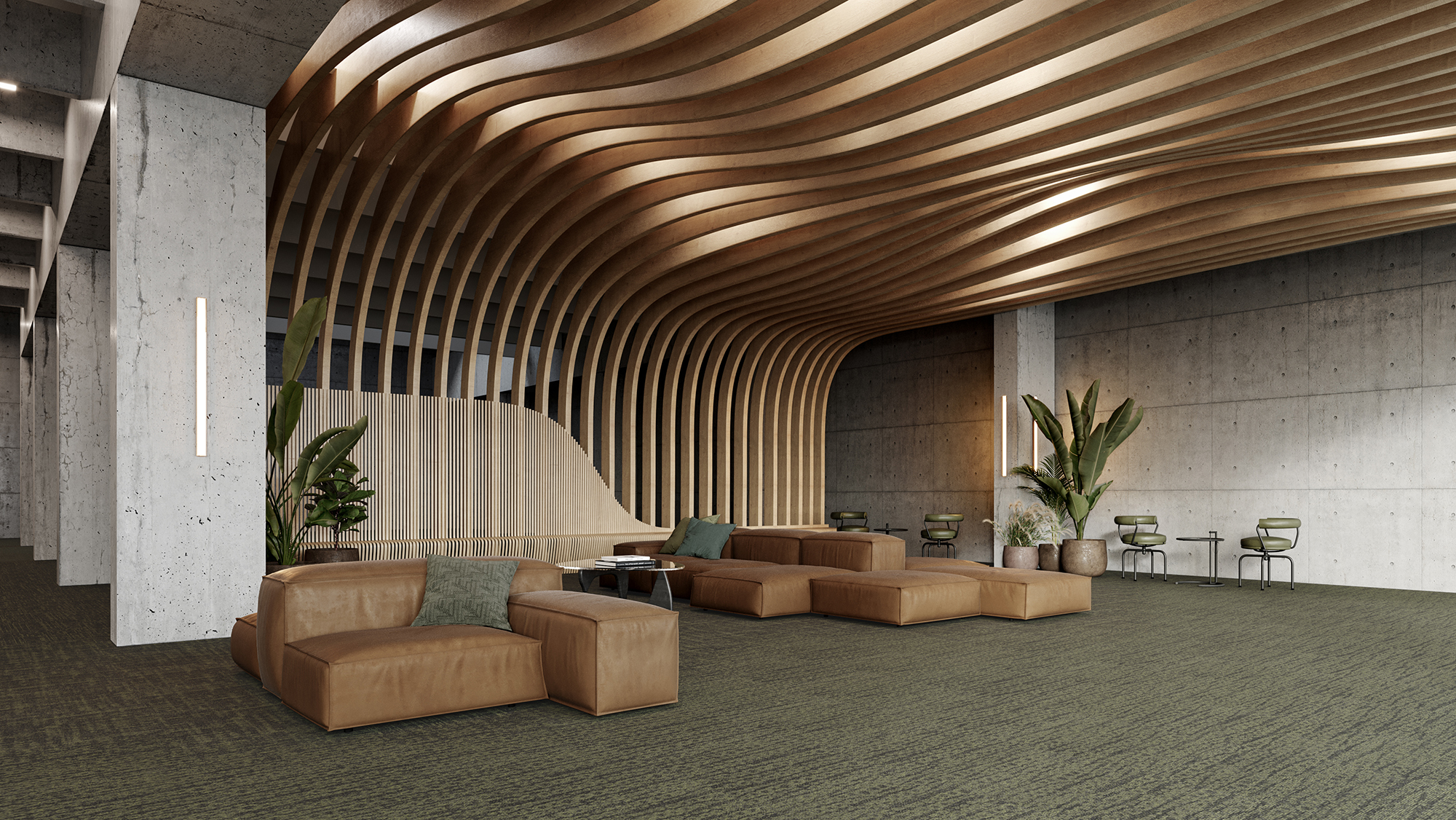Feature Image: Mezzo from modulyss‘ Artcore Collection
Silence is a luxury, especially in workspaces, where noise can affect productivity and collaboration. Research backs that up. Lower ambient noise levels can ‘buffer the negative impact of psychosocial job stress.’ How can acoustic flooring help?
21st-century interior design can stay relevant if aesthetically pleasing and acoustically sound. Acoustic walls and ceilings, along with partitions, have been discussed often. One element that usually goes unnoticed but plays a vital role in achieving this balance is acoustic flooring. Let’s delve into the world of acoustic flooring and learn more about its transformative impact on office environments.
Acoustic Flooring – What Does It Mean & How Sustainability Ties Into the Mix
Acoustic flooring is designed to absorb airborne and impact noise by reducing sound transmission (noise from different areas travelling to another space) and providing impact insulation (impact-led noises like thuds, knocks, etc.). It is ideal for residential and commercial applications but is especially useful for offices because of the high noise levels in such spaces. Some acoustic flooring solutions offer shock absorption and underfoot comfort, making them a must-have.
But there is more to it than just function. There is science, too. A shining example is the comfortBACK and comfortBACK ECO backing from modulyss. Instead of the fibres having to absorb the constant impact of footfall and traffic, comfortBACK takes up the challenge and enhances the wear resistance and appearance retention of modulyss carpet tiles. Taking this a step further, comfortBACK ECO is a Cradle to Cradle Certified® Gold acoustic carpet tile backing that boasts Platinum score (the highest possible) in the C2C Certified ‘Material Health’ assessment. comfortBACK ECO equipped carpet tiles can be disassembled and recycled into a new backing, thereby contributing to the circular economy.
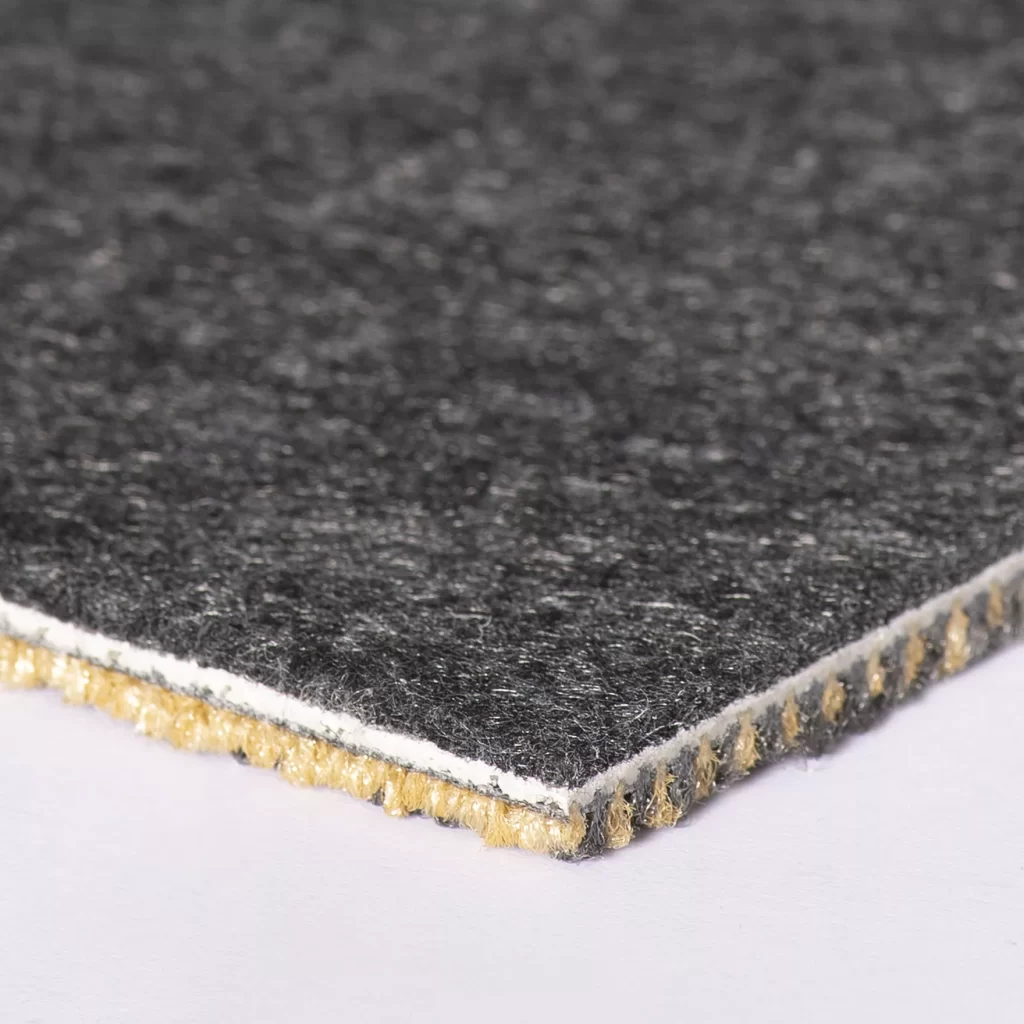
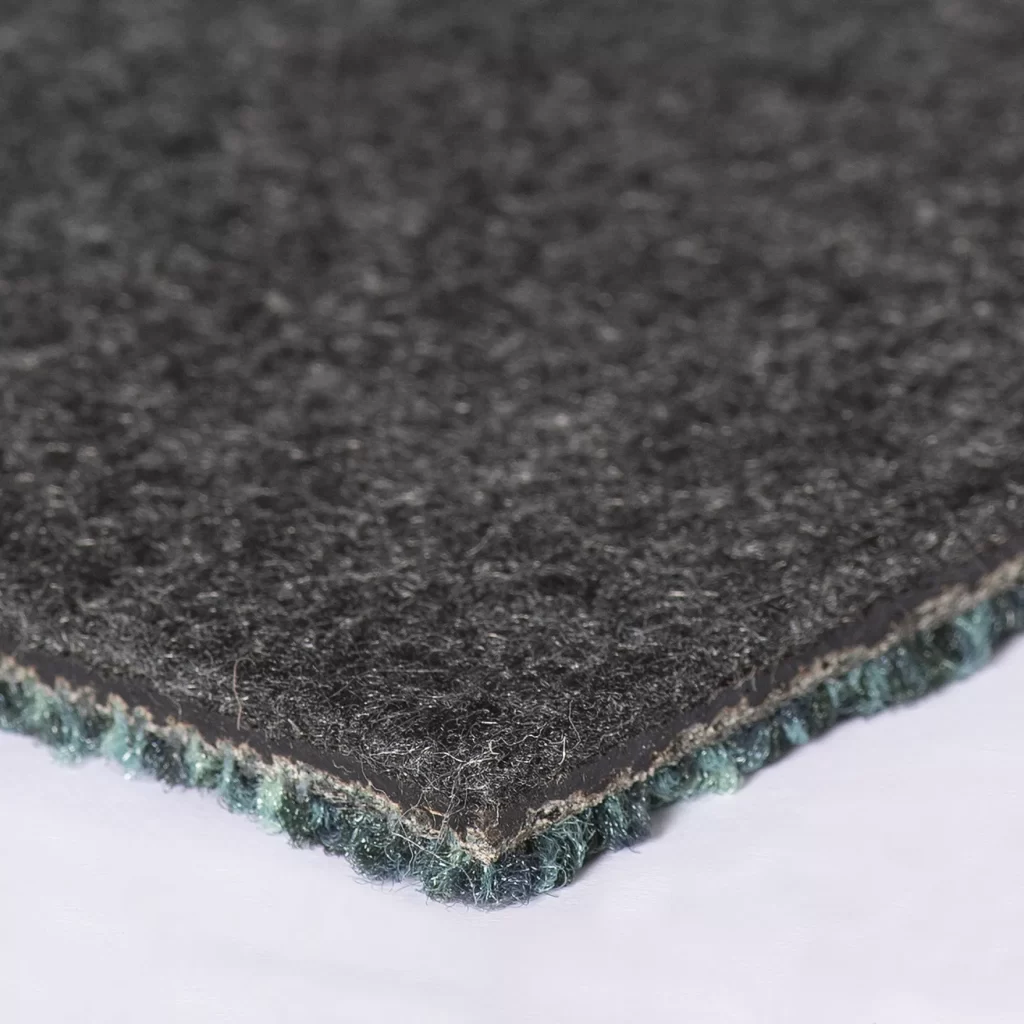
From left to right: comfortBACK; comfortBACK ECO
Acoustic Flooring – Any Limitations?
Acoustic flooring encompasses a diverse range of options, from carpet tiles to expansive carpets and vinyl flooring to striking statement pieces. Its versatility extends to the materials used in its construction, including vinyl, cork, rubber, felt, and beyond.
Acoustic flooring also helps create a cohesive design theme with lighting, furniture, upholstery, and walls. It can be tailored to suit any design aesthetic, from sleek and modern to warm and traditional.
What Acoustic Flooring Does For Office Design
Acoustic flooring provides functional and aesthetical benefits. It absorbs sound waves, enhancing speech clarity, reducing noise, and creating a comfortable atmosphere. Here’s more about what it can do.
Function
Besides noise reduction, it can also be a great way to introduce sustainability in your design narrative. Various stunning options from leading brands are crafted from recycled materials, reducing carbon footprint. Many are also known for their durability, easy installation and hassle-free maintenance.
Acoustic flooring aids in creating spaces that are well-suited for collaboration, brainstorming or quiet individual work. It also ensures privacy and boosts the overall productivity of any workplace.
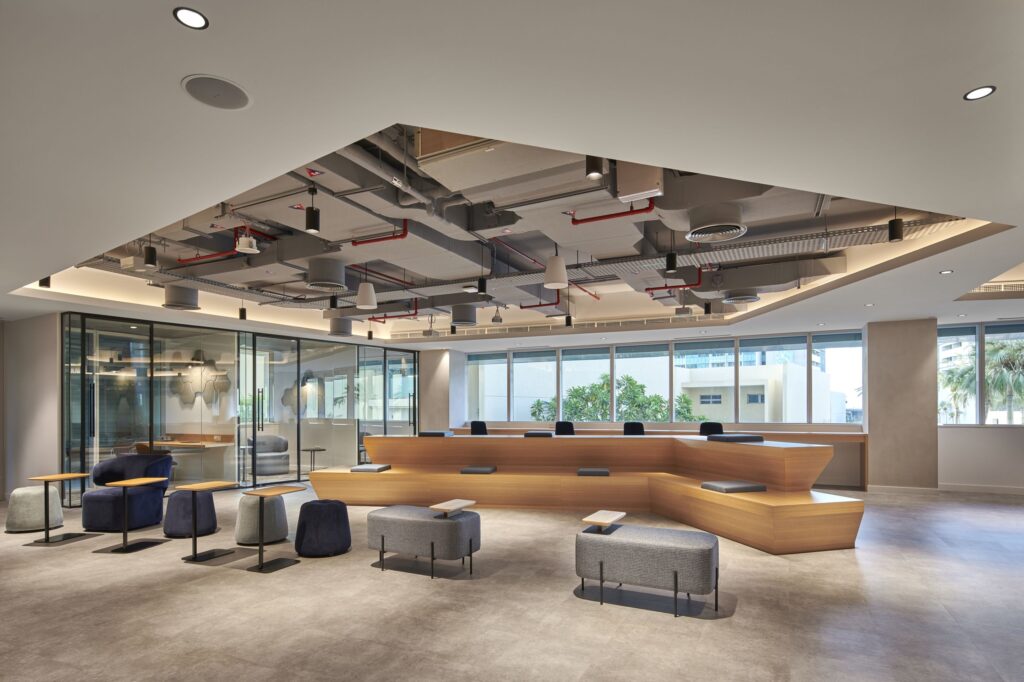
ADQ Office, Etihad Airways Centre Abu Dhabi feat. First Define by modulyss
Form
It becomes difficult to appreciate the beauty of the most well-design spaces when one is constantly distracted by noise. Acoustic flooring not only lends the metaphorical spotlight on the other elements in the room but is also a valuable addition to a space. It works like a foundation that brings the overall design together, creating a cohesive look.
Available in a range of colours, patterns and sizes, it offers infinite possibilities to designers to create visually alluring yet practical workspcaes.
Acoustic Flooring In Office Design: How to Elevate a Space
1. Start By Choosing the Right Material
The material selection holds the key to infusing a space with its intended character. For a contemporary aesthetic, consider the refined elegance of engineered wood or the versatile allure of luxury vinyl tiles. Explore different material possibilities before you zero in on one, to ensure it matches your design vision.
Additionally, look for the Noise Reduction Coefficient (NRC) of the solution. An NRC of 1.0 is considered excellent but 0.50 is also great. Higher the number, greater the sound absorption. Thicker materials tend to have a higher NRC, however as innovations revolutionise the design industry, that is set to change.
2. Set the Tone
The floor is like a vast canvas. And just because you’re using acoustic flooring, it doesn’t mean it has to be bland. For example, modulyss’ First Forward could be used to create the piano tile effect. However, for conventional workspaces, neutral tones, such as greys, beiges, and soft blues, are ideal for creating a calm, professional environment. Litho from modulyss’ Artcore Collection is an excellent example of that.
But for modern workspaces like co-working areas, you could use bold patterns and vibrant colours like Aberdeen to inject energy and creativity into a space. Consider how the flooring will interact with lights and other elements in the space when choosing acoustic flooring. Using the brand colours of the company you’re designing for would also be an idea to consider to tap into the power of customisation.
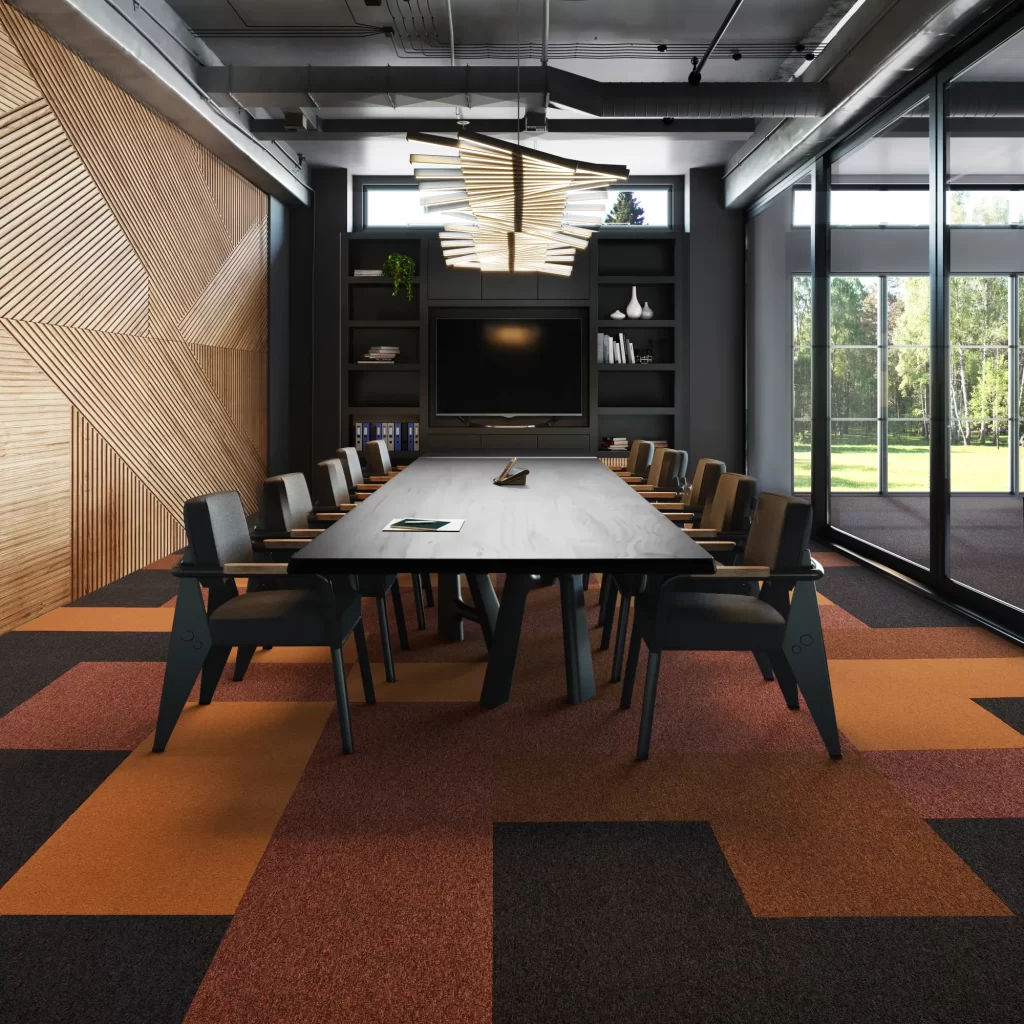

From left to right: First Forward; Litho
3. Don’t Make It an Afterthought
Ensure that the installation of acoustic flooring is a part of your design plan rather than something you think of after. It could make or break a design theme, affecting how all the other elements would look together. For instance, if your office features sleek, modern furniture with metallic accents, then pairing it with acoustic flooring that has a smooth, polished finish can create a unified, contemporary look. Alternatively, if your design includes natural wood furniture and greenery, consider acoustic flooring with earthy tones and subtle textures that mimic natural materials.
Strategically place acoustic flooring in high-traffic and high-noise areas, if not everywhere. Open-plan offices, waiting areas, and corridors are good places to start. You could consider installing acoustic flooring and other solutions like acoustic ceilings or panels in meeting rooms. Group high-traffic and high-noise places together when you conceptualise the design narrative.
When selecting flooring, durability and ease of maintenance are vital considerations. In high-traffic areas, resistance to stains and wear and tear is paramount. By prioritising these factors, you’ll ensure a long-lasting g floor that withstands the test of time
Well-Being First
Countries like the United Kingdom and New Zealand have acoustic standards and guidelines for educational institutions, residential spaces, etc. Acoustic flooring and other elements for soundproofing are becoming a trend elsewhere, too, and could soon become a norm.
Sustainable acoustic flooring, with materials such as hemp and flax fibers gaining traction, appears to be the wave of the future. Additionally, there is a trend towards integrating technology, such as the Internet of Things (IoT), into acoustic flooring to improve performance.
This highlights how the industry is geared towards design that is good for the eyes, and for the ears.

